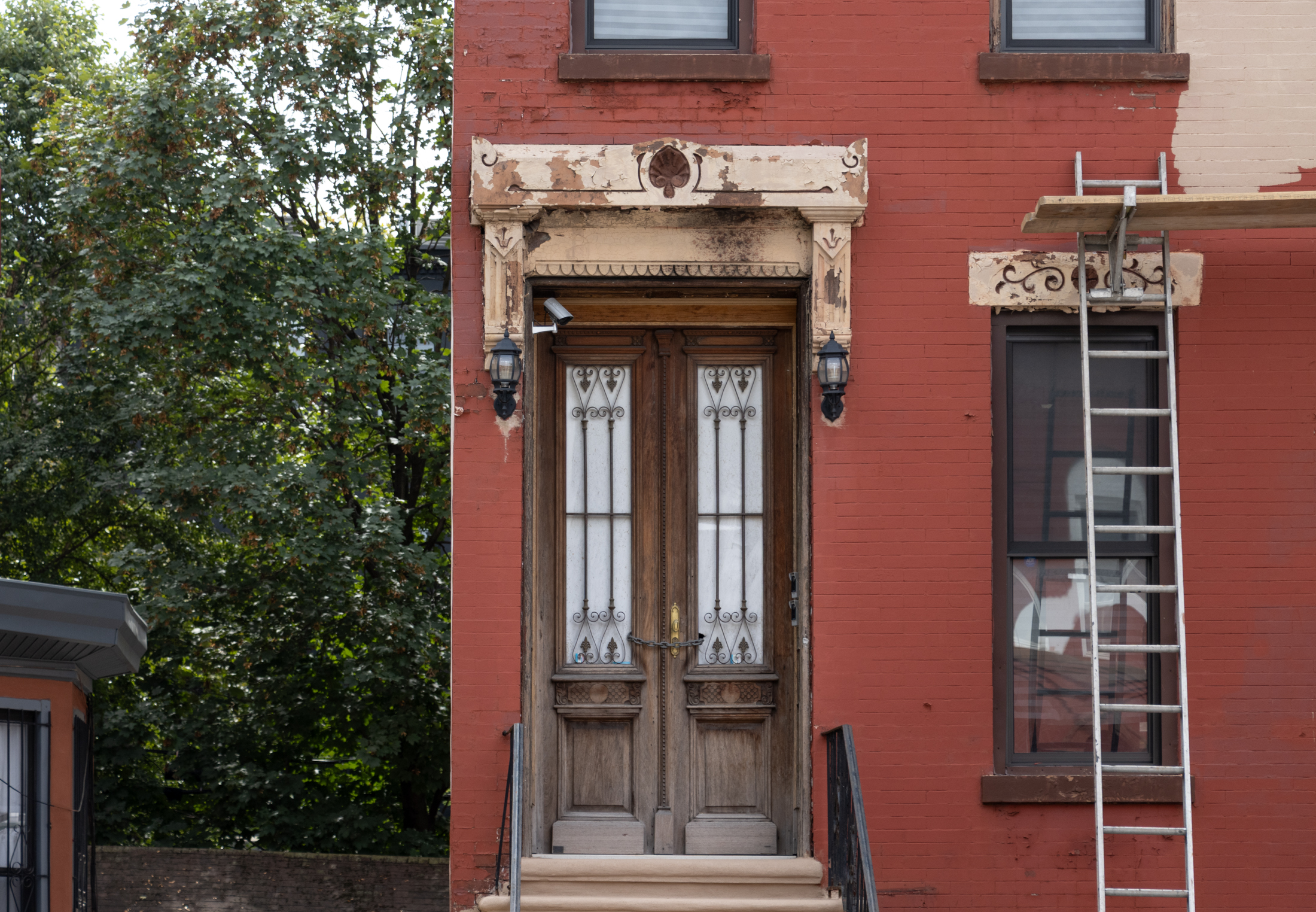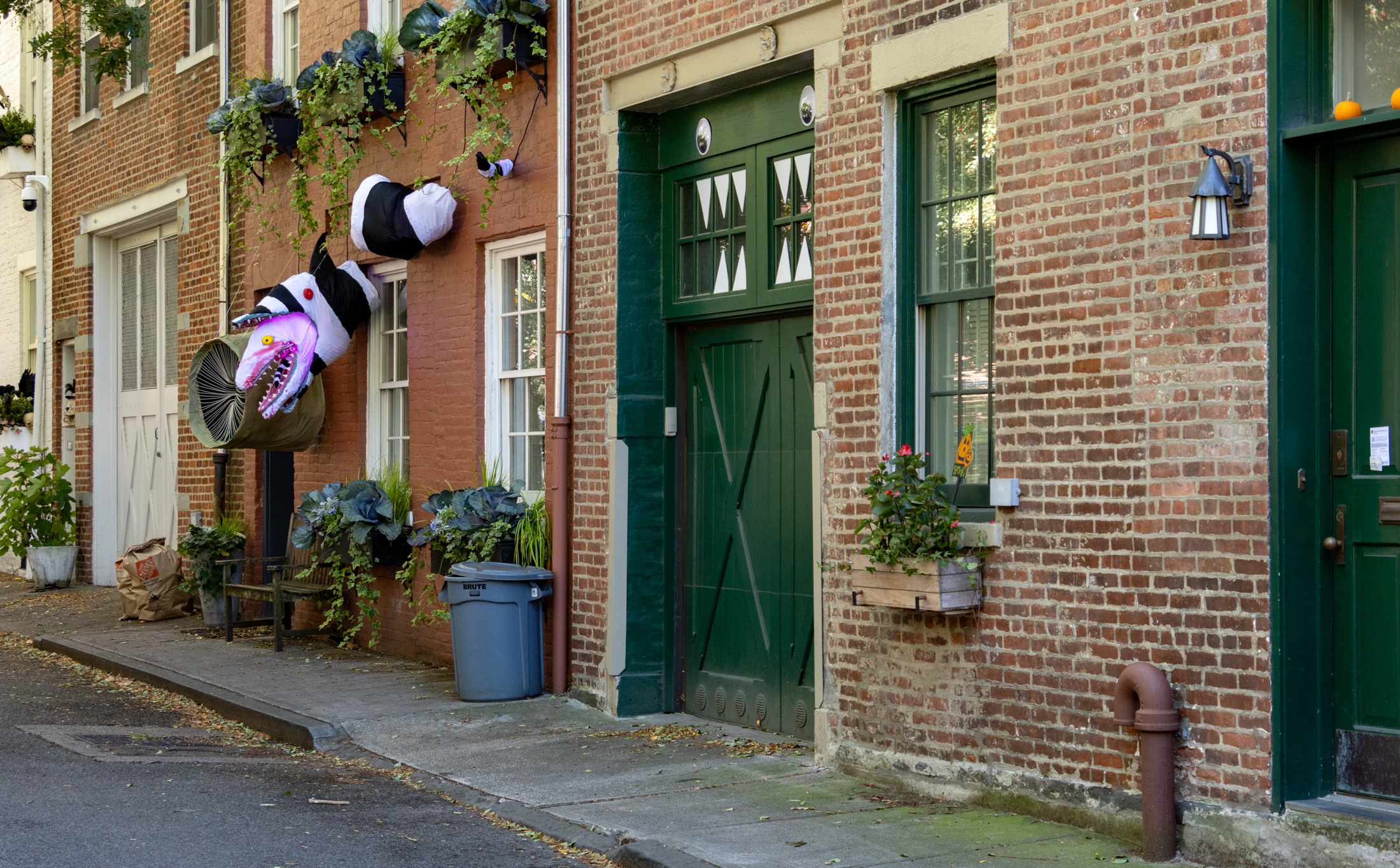Why Architecture Matters: Paul Goldberger and AY
The Leonard Lopate Show on WNYC on Christmas Day, was a rebroadcast of the original 11/17/09 show with New Yorker (and former NYT) architecture critic, Paul Goldberger. Speaking before the recent closing of the bond issue and property transfer (and erection of the arena propaganda, above), Goldberger went on record saying that he thought that…


The Leonard Lopate Show on WNYC on Christmas Day, was a rebroadcast of the original 11/17/09 show with New Yorker (and former NYT) architecture critic, Paul Goldberger. Speaking before the recent closing of the bond issue and property transfer (and erection of the arena propaganda, above), Goldberger went on record saying that he thought that AY was, and is, a mistake. He based that on his opinion that mega-projects don’t improve street life, and he hoped that the slowdown in the economy would give the project time for improvement, and the correction of mistakes. He went on to quote the celebrated critic Louis Mumford, who said that, the great function of the city is to permit, indeed, to encourage and incite, the greatest possible number of meetings, encounters, challenges between all people, classes, groups, providing a stage upon which the drama of life may be enacted. Mega-projects, and he cites the World Trade Center, as well as Battery Park City, are enclaves unto themselves that do not encourage this great mingling of people necessary to great city life. Goldberger conceded that he likes the redone façade of the proposed stadium, but still does not approve of the project. Over the years, I’ve realized that streets are more important than buildings,” he said. “The urban experience has to be had on foot.”
The Atlantic Yards Report also has a full report of the Lopate/Goldberger interview, with commentary.





Slopefarm;
I used the examples of BPC, MetroTech and Rock Cnter to counter Goldberger’s ridiculous assertion that megaprojects do not work in a city. All three of these projects have been a success. Indeed, I would argue that as time has gone on, they integrate further into the fabric of the city and become more successful, and that goes to your argument.
At the time that Rockeffeler Center was built, the planners were considered nutso for building up to 6th Ave. At that time, 6th Ave had an “EL” running over it and was a small-scale backwater. The Rockefellers had the foresight to see that Midtown would continue to expand westward.
Which brings me to my question for you and other opponents: given that Brooklyn is projected to absorb another half-million people, where do you want the development to occur to absorb that growth??? During the 20’s, the builders of 1 Hanson Place foresaw that Downtown Brooklyn would eventually extend to that area, given the mass transportation available. Does it not make sense to channel that growth into an area that is presently undeveloped, but has excellent mass-transportation. Would your rather that we build another Co-Op city or Starret City out in the fringe, where no mass-transportation is available?
By the way, notice that these complexes, which are “affordable” are never criticized as failed “mega-projects”. Hmmm, why is that so????
Rockefeller Center is also designed to pull a pedestrian in. First of all, it’s in the middle of midtown Manhattan, and as such, nothing short of a huge surrounding fence would keep people from passing through it. The shops inside and out bring people through it, and of course, the center is a tourist and pedestrian mecca. That would never be the case for AY, but that’s why it’s not a fair comparison.
A better comparison would be Co-op City, but that’s an enormous, wind whistling, self contained complex totally cut off from the rest of the Bronx by design. Oh, wait a minute….
Rockefeller Center is different animal- it was meant to be the heart of the city. t has amazing public spaces and architecture- even underground, RC was planned to be a part of NYC, not a fortress against it. I don’t think was even thinking of Rockefeller Center- but certainly the WTC was a prime example of the mistake of street demapping.
Metrotech is hardly the megaproject AY will be- but I have yet to hear anyone claim it brought a lively public space to downtown. AY will be a massive Fortress, closed off from the surrounding area, while massively straining it. You’re cheering for a guy who lied, cheated and stole his way to getting the money to build (if in fact he has it yet). I find few redeeming qualities in a project that shorts the City on money for the Rail Yards, while they are cutting bus service (including service in my neighborhood).
Here’s the problem with the debate.
Proponents argue AY vs. 30 more years of rail yards with nothing on top. That’s an easy argument to win, but it drowns out any meaningful discussion of scale, planning, impact, etc.
Opponents argue AY vs. the road not taken — smaller scale project with fewer public subsidies. That deal was on the table and the powers that be did not take it. I am largely sympathetic to this argument, and would have preferred a plan that came out of a meaningful process and that fit better in the community in which it will be placed. But I struggle with the question of how to get there, because it seems clear the deal is not going to get blown up. Opponents need a present tense answer to proponents AY vs. yards only argument.
I don’t think, however, that Rock Center, BPC and MetroTech are fair comparisons. None of them butt up against lower density residential neighborhoods the way this one does. Where BPC is, there used to be water. It is built on landfill, separated from everything else by the West Side Highway (boulevard??), and is adjacent to large office buildings. It did no harm to existing communities. Rockefeller Center is right in the middle of Midtown Manhattan. Metrotech is farther removed from Brooklyn Heights and Boerum Hill than this one is from FG and PH. And for me that’s one of the real planning disasters. A smaller scale development that maintained and enhanced the street grid would have helped knot the two neighborhoods closer together and respected the scale of each. This just puts up a big, high density wall between them — like plopping Battery Park City around Court and Atlantic. Although i struggle to see a way to get to that kind of result now, it was an option once, not mere fantasy.
Battery Park City is a tremendous improvement over what was there, and is quite popular place for living, entertainment and working. In case folks haven’t noticed, it is cut-off from the city due to a semi-highway. That highway would have cut off ANY development that went in there, from the rest of the city.
Rockefeller Cneter is not a success?
Finally, anyone who knows what Downtown Brooklyn looked liked in the 60’s and 70’s would indeed say that Metro-Tech is a success. Question for all the naysayers: does anyone seriously believe that the companies that are presently located in Metrotech would have relocated to Downtown Brooklyn had it not been built?
Excellent insights from Goldberger and Mumford, proven by their opposites like Metrotech…
The arena and surrounding plaza will de-map several streets in its vicinity. Fifth avenue will stop at Flatbush avenue. This is partly what is taken into consideration.
I noticed on the last rendering that some of the streets that now cross over the rail yard will become part of the building. A drag for cars, but also a huge drag for pedestrians like me. To walk to Atlantic mall area/subway from Prospect Heights will mean going all the way around the arena and down Flatbush.
leave the pit alone! The pit contributes to street life by not siphoning our tax dollars to Ratner and Russian billionaires. The pit’s doing its part.